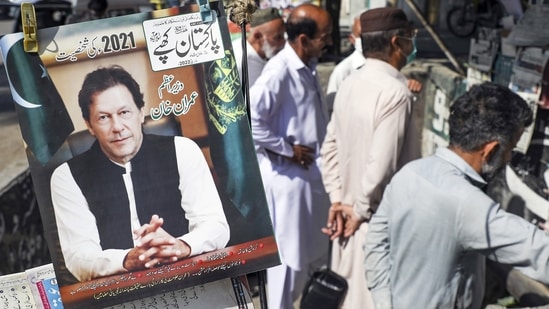Pak PM Imran Khan loses no-confidence vote: What happens now?
Khan's ouster is likely to bring another round of instability in the nuclear armed country, in which the military has a long record of intervening in politics.
Pakistani opposition political parties have passed the no-confidence vote in parliament seeking the ouster of Prime Minister Imran Khan, largely on accusations of economic mismanagement. As many as 174 members recorded their votes in favour of the resolution.

The bid to oust Khan got a boost when a key government ally said it reached a pact with the opposition and then quit Khan's ruling coalition.
Khan's ouster is likely to bring another round of instability in the nuclear armed country, in which the military has a long record of intervening in politics.
How does the no-confidence vote work?
Under the constitution, a prime minister is elected by a majority of the lower house National Assembly, which has 342 members.
A candidate needs a majority of legislators, 172, to vote for him to become prime minister. That is the same number of votes against him in a no-confidence vote needed to oust him and dissolve his cabinet.
So Khan could survive a no-confidence vote even if he got fewer votes than the opposition but only if the latter did not get the 172 votes that make up a majority in the 342-seat house.
Catch Pakistan political crisis LIVE updates here
What happens after the vote?
If Khan loses the vote, parliament can continue to function until its five-year tenure ends in August 2023, after which a general election is due within 60 days.
There will be a vote in the National Assembly to elect a new prime minister to serve until then. Candidates can be put forward by any party with legislators in the assembly.
The new prime minister can, however, call a general election immediately, without waiting until 2023.
Some constitutional analysts say the assembly can be dissolved and a general election held if no candidate can secure a majority of votes to become the prime minister.
What is the timeline of the vote?
Opposition parties filed the no-confidence motion in early March, and it was presented and tabled before the National Assembly on Monday.
The speaker of the National Assembly has to carry out the vote no sooner than three days and no later than seven days after the motion is tabled.
The earliest the vote can happen is Thursday. The latest, by most accounts, is Monday.
Is the vote close?
Khan lost the vote with 174 in favour of the no-confidence motion and zero against it. He became prime minister after his party, the Pakistan Tehreek-e-Insaaf (PTI), won the most seats in the 2018 general elections.
However, the PTI did not have a simple majority by itself and had to form a coalition with other parties.
The PTI has 155 members and Khan crossed the 172-vote threshold to be elected prime minister in 2018 with the help of coalition partners. The PTI-led coalition increased its numbers over the past three years.
What was Khan's strategy?
Khan had ordered all PTI legislators to remain absent from the assembly on the day of the vote to mitigate any chance of dissidents secretly supporting the motion to remove him.
Absenteeism did not hurt because Khan didn't need to win; he just needed to ensure that the opposition cannot get the 172 votes needed to pass the no-confidence motion.
Khan had also filed a petition in the courts seeking lifetime electoral bans against on those found to have broken ranks, in a bid to dissuade potential dissidents.
(With inputs from Reuters)






